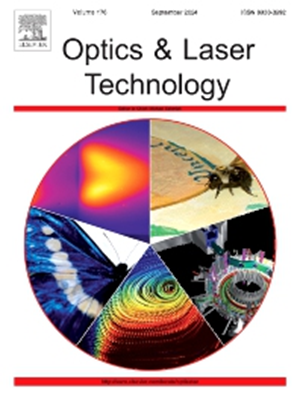Enhanced photoacoustic tomography via accelerated mean-reverting generative diffusion model
IF 4.6
2区 物理与天体物理
Q1 OPTICS
引用次数: 0
Abstract
Photoacoustic tomography (PAT), as a novel non-invasive hybrid biomedical imaging technology, combines the advantages of high contrast from optical imaging and deep penetration from acoustic imaging, and its applications in biomedical imaging are becoming increasingly widespread. However, the conventional standard reconstruction methods under sparse view may lead to low-quality image in photoacoustic tomography. To address this issue, this paper proposes a sparse sinogram (projection domain) data reconstruction method based on mean-reverting diffusion model. By simulating the forward and reverse of the Stochastic Differential Equation (SDE) processes from high-quality images (full-view projection data) to degraded low-quality images (sparse-view projection data), this method enables the restoration of sparse-view projection data to full-view projection data without relying on any task-specific prior knowledge. Blood vessels simulation data, circular phantom data, the animal in vivo experimental data, and data acquired from an actual PAT system were used to evaluate the performance of the proposed method. In the experimental tests on the “T”-shaped sample data acquired from the actual imaging system, even under extremely sparse projections (16 projections), the proposed method demonstrated significant improvements in peak signal-to-noise ratio compared to Cycle-GAN and U-Net, with increases of 16.46 dB (∼69.2 %) and 0.86 dB in the projection domain, respectively. This method enhances the sparse reconstruction capability of PAT in the sinogram domain, which is expected to reduce the costs and shorten the acquisition time of PAT in the practical applications, thus further expanding the application scope of PAT.
通过加速均值恢复生成扩散模型增强光声层析成像
光声成像(PAT)作为一种新型的无创混合生物医学成像技术,结合了光学成像的高对比度和声成像的深穿透性等优点,在生物医学成像中的应用日益广泛。然而,传统的稀疏视图下的标准重建方法可能导致光声断层成像质量较低。针对这一问题,本文提出了一种基于均值回归扩散模型的稀疏正弦图(投影域)数据重构方法。通过模拟随机微分方程(SDE)从高质量图像(全视图投影数据)到退化的低质量图像(稀疏视图投影数据)的正反向过程,该方法能够在不依赖任何特定任务的先验知识的情况下将稀疏视图投影数据恢复到全视图投影数据。利用血管模拟数据、圆形幻影数据、动物体内实验数据和实际PAT系统获得的数据来评估所提出方法的性能。在对从实际成像系统获取的“T”形样本数据的实验测试中,即使在极其稀疏的投影(16个投影)下,与Cycle-GAN和U-Net相比,所提出的方法在投影域的峰值信噪比分别提高了16.46 dB(~ 69.2%)和0.86 dB。该方法增强了PAT在正弦图域的稀疏重建能力,有望在实际应用中降低成本,缩短PAT的采集时间,从而进一步扩大PAT的应用范围。
本文章由计算机程序翻译,如有差异,请以英文原文为准。
求助全文
约1分钟内获得全文
求助全文
来源期刊
CiteScore
8.50
自引率
10.00%
发文量
1060
审稿时长
3.4 months
期刊介绍:
Optics & Laser Technology aims to provide a vehicle for the publication of a broad range of high quality research and review papers in those fields of scientific and engineering research appertaining to the development and application of the technology of optics and lasers. Papers describing original work in these areas are submitted to rigorous refereeing prior to acceptance for publication.
The scope of Optics & Laser Technology encompasses, but is not restricted to, the following areas:
•development in all types of lasers
•developments in optoelectronic devices and photonics
•developments in new photonics and optical concepts
•developments in conventional optics, optical instruments and components
•techniques of optical metrology, including interferometry and optical fibre sensors
•LIDAR and other non-contact optical measurement techniques, including optical methods in heat and fluid flow
•applications of lasers to materials processing, optical NDT display (including holography) and optical communication
•research and development in the field of laser safety including studies of hazards resulting from the applications of lasers (laser safety, hazards of laser fume)
•developments in optical computing and optical information processing
•developments in new optical materials
•developments in new optical characterization methods and techniques
•developments in quantum optics
•developments in light assisted micro and nanofabrication methods and techniques
•developments in nanophotonics and biophotonics
•developments in imaging processing and systems

 求助内容:
求助内容: 应助结果提醒方式:
应助结果提醒方式:


